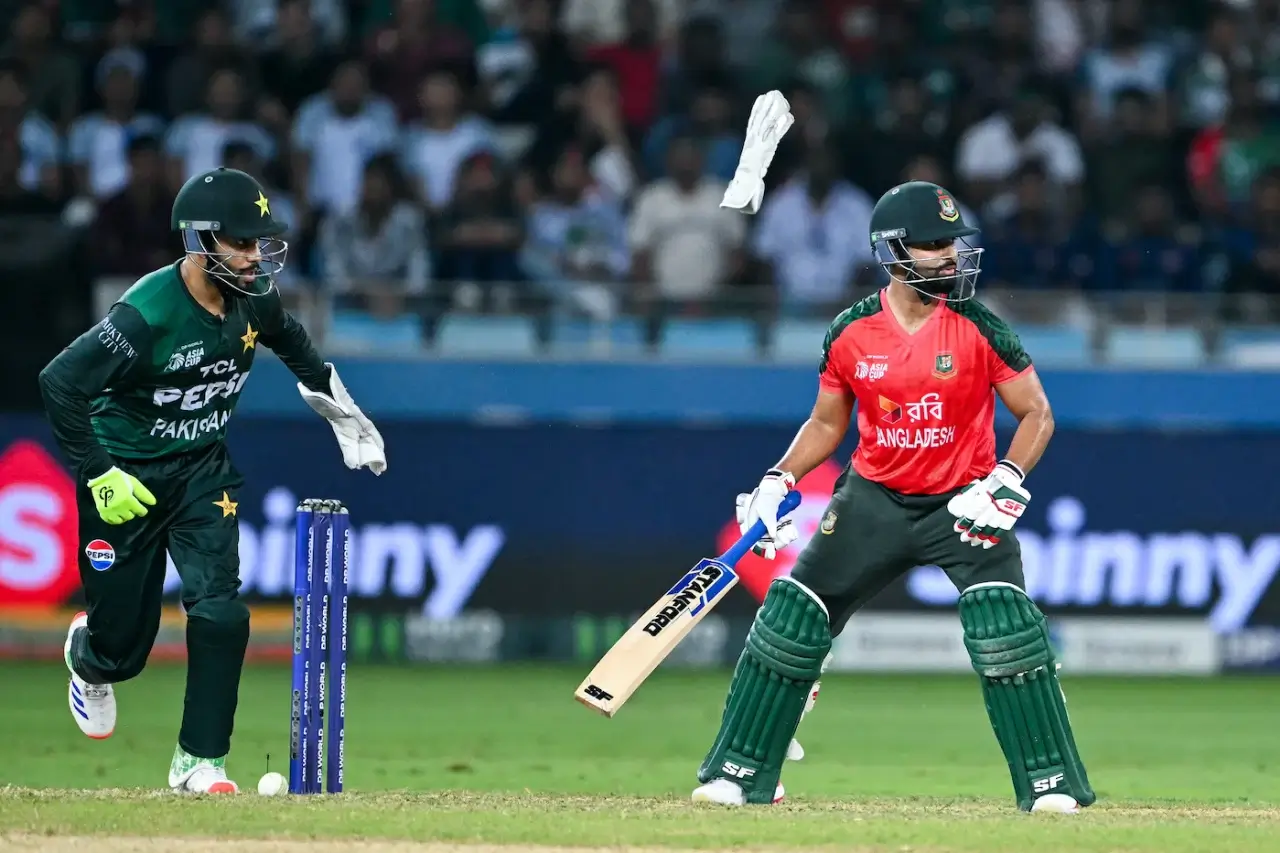Bangladesh’s Asia Cup campaign ended without silverware, but the lessons were priceless. The team entered with belief, driven by recent ODI success and fresh talent injections. Yet, in Dubai and across the tournament, their weaknesses surfaced under pressure. At the same time, their strengths showed that this side is building toward something bigger.
Batting inconsistencies cost them in crucial matches, with collapses leaving bowlers overworked. Senior players like Shakib Al Hasan and Mushfiqur Rahim carried pressure but needed stronger middle-order partners. On the other hand, bowling showed improvement, with Taskin Ahmed and Shoriful Islam providing breakthroughs. Young spinners also gained confidence against quality opposition, learning how to adjust fields and lengths.
India’s methods, visible in the India vs Bangladesh timeline, showed how practice improved composure. Embracing similar processes could help Bangladesh manage nerves and win tight matches. Building confidence in finishing will transform the team into a far stronger competitor.
The Asia Cup also taught Bangladesh how important finishing and strike rotation remain. Against teams like India and Pakistan, dot balls built pressure that led to errors. The need for match-temperament and better handling of crunch situations became painfully obvious. These lessons, though harsh, may be the stepping stones for greater consistency in future tournaments.
Batting lessons — from collapses to controlled innings
Leadership is crucial in guiding young players through nervous phases in tournaments. Captains must stay calm and communicate clearly to prevent panic spreading. Experienced seniors like Shakib can shield young batters from collapse with mentorship. A stronger leadership culture will be key if Bangladesh wants to rise further.
Bangladesh’s batting showed promise but also painful flaws across the Asia Cup. Top-order players like Litton Das and Najmul Hossain Shanto got starts but failed to convert. Middle-order collapses became frequent, putting pressure on seniors to rebuild from shaky positions. In several games, poor shot selection and dot-ball accumulation stalled scoring momentum entirely.
At the same time, there were signs of growth for the batting unit. Shakib demonstrated once again how to pace an innings under pressure effectively. Towhid Hridoy displayed glimpses of composure, proving he could hold innings together. If nurtured well, these players can become the backbone of Bangladesh’s batting in tournaments.
The team’s biggest lesson is learning to rotate strike consistently in middle overs. Against disciplined bowling, Bangladesh struggled to find gaps and relied too heavily on boundaries. Developing strike rotation will reduce dot balls and keep the scoreboard moving steadily. Without this improvement, collapses will continue to undo bright starts from their top order.
What the batting unit must improve?
Bangladesh must focus on composure and patience during pressure phases of an innings. Building partnerships rather than relying on individual brilliance will create greater stability. Training sessions should emphasise playing risk-free cricket until the scoring pace can lift. Improving fitness and running between wickets can also help strike rotation and reduce dot-ball pressure.
Fielding standards and missed chances
Fielding remained one of Bangladesh’s weaker areas during the Asia Cup. Dropped catches and misfields added pressure in games already hanging by small margins. Against stronger batting units, those lapses proved costly and turned close contests away. In international cricket, fine margins like these separate winners from those who fall short.
Improving fielding standards must become a top priority for Bangladesh’s coaching group. Fitness levels, reaction times, and throwing accuracy are all areas that need upgrading. Modern cricket demands not just bowlers and batters but agile, reliable fielders across positions. With young talents, this is an area where quick improvement is realistic.
Players like Afif Hossain and Mehidy Hasan already show energy and intent in the field. Building consistency across the squad would complement the bowling unit’s growing strength effectively. Practicing under pressure, simulating game-like drills, and improving athletic conditioning will be crucial next steps. If Bangladesh lifts its fielding, it can compete toe-to-toe with elite teams.
Role of youth and emerging players
One dropped catch in the powerplay or death overs can decide entire matches. Bangladesh’s lapses in this tournament exposed how much ground remains in this aspect. Developing sharp reflexes, mental focus, and team accountability in fielding will boost results. This department could easily save ten to fifteen runs in every game consistently.
Bangladesh’s campaign highlighted both the promise and inexperience of its younger players. Towhid Hridoy showed composure and shot selection that suggest a reliable middle-order future. Tanzim Sakib’s bowling spells brought glimpses of aggression, though consistency remains a hurdle for him. These players represent the future but still need grooming to handle higher-pressure moments.
Balancing experience and youth is now one of the selectors’ biggest challenges. Seniors cannot carry the side forever, but youngsters cannot be overexposed too quickly. The Asia Cup proved that younger players can hold their nerve for short periods. Building that consistency across matches and tournaments will be the real test.
Grooming youth into match-winners
Mentorship within the squad can accelerate the growth of these emerging names. Seniors like Shakib Al Hasan and Mushfiqur Rahim can shield youngsters during collapses. With careful rotation and patient investment, Bangladesh can build a reliable, balanced squad. This mix of youth and experience will be crucial ahead of global tournaments.
Emerging players need both technical support and mental guidance in their development. Regular exposure to high-pressure matches builds resilience and sharpens decision-making. Seniors must lead mentoring roles, passing on lessons learned from difficult campaigns. With this system, Bangladesh can turn young promise into proven international performers quickly.
Learning from rivals and adapting tactics
Another lesson from this Asia Cup is the value of studying rivals closely. India’s use of Tilak Varma as an anchor showed the importance of defined roles. Pakistan’s openers revealed how fast starts can tilt early momentum quickly in games. Observing such approaches can give Bangladesh tactical clues for their own game planning.
Adaptation, however, has been a weak spot in Bangladesh’s cricket culture. Teams often stick to one plan and fail to adjust when situations change. This was clear when batters kept targeting boundaries instead of rotating strike under pressure. Learning flexibility from rivals will give Bangladesh an edge in tournaments where conditions vary.
Coaches should also focus on scenario-based planning ahead of series and competitions. Identifying best bowlers for different match stages can help build stronger match strategies. Adapting batting orders depending on opposition bowlers could also improve chase consistency. Tactical sharpness, combined with better execution, will give Bangladesh competitive consistency.
Cricket now moves quickly, and teams that adapt best dominate consistently. Bangladesh’s rigid approaches hurt them when opposition changed plans mid-innings. Studying rivals’ tactical shifts and adding flexibility will strengthen Bangladesh’s game intelligence. This will help the team win matches not just on skill but also strategy.
Bowling growth and spin advantage
Bowling remains Bangladesh’s strength, and the Asia Cup reinforced that impression strongly. Taskin Ahmed led with pace, bounce, and aggression, striking regularly in powerplay overs. Shoriful Islam provided steady support, showing discipline in line and length consistently. Together, they gave Bangladesh hope even when batting performances fell short badly.
Spin too emerged as an advantage, with Mehidy Hasan Miraz and young options testing batsmen. Against sides like Pakistan, they created pressure by tying down middle overs effectively. Their control forced opposition batters into mistakes, showing Bangladesh’s reliance on spin continues. If balanced correctly, the team can use both pace and spin as twin threats.
What the Asia Cup highlighted is Bangladesh’s need for stronger death-bowling execution. Too often, bowlers leaked runs when pressure should have been applied tightly. Training to improve yorker accuracy and field placement at the death will be vital. With fine-tuning, this bowling group could genuinely compete with top-tier international attacks.
How spin can be Bangladesh’s game-changer?
Spin offers Bangladesh a competitive edge in conditions across Asia, including slow pitches. Young spinners gained vital exposure, learning how to control runs against attacking batters. Pairing experienced hands like Shakib with developing spinners builds a sustainable bowling structure. If nurtured well, Bangladesh could turn spin into their long-term weapon.
Temperament and handling pressure
This Asia Cup exposed Bangladesh’s struggles with temperament in crunch moments. Matches against India and Pakistan showed panic when scoreboard pressure intensified. Fielding errors, rash shots, and nervous decision-making tilted winnable games away. For a team aspiring for consistency, composure is the missing ingredient at present.
The lesson here is not purely technical but mental and tactical together. Bangladesh must develop match-scenarios in practice, replicating final-over chases or tense spells. Mental conditioning coaches could play a greater role in preparing young players for big occasions. Leadership groups must also guide younger teammates during high-pressure overs to reduce panic. This is where Bangladesh can learn from rivals who rehearse situations heavily.
Conclusion
Bangladesh’s Asia Cup campaign did not bring a trophy but brought critical lessons instead. Batting collapses exposed weaknesses, but glimpses of talent hinted at a brighter future. Bowlers showed promise with both pace and spin, but death bowling requires tightening. Most importantly, temperament under pressure became the defining issue Bangladesh must fix soon.
For selectors, this campaign offers insight into which players deserve longer runs. For coaches, it highlights where training and mental preparation need investment urgently. For fans, it shows that while defeats sting, growth is visible in patches. From collapses to small victories, Bangladesh is evolving through the lessons of this Asia Cup.
If the team applies these lessons consistently, they can transform potential into reliable performance. Finishing matches, rotating strike, and embracing leadership culture will lift their consistency. Their bowlers can already compete, and their batters are learning composure through failures. With steady growth, Bangladesh’s Asia Cup story can be remembered as a starting point, not an ending.
















